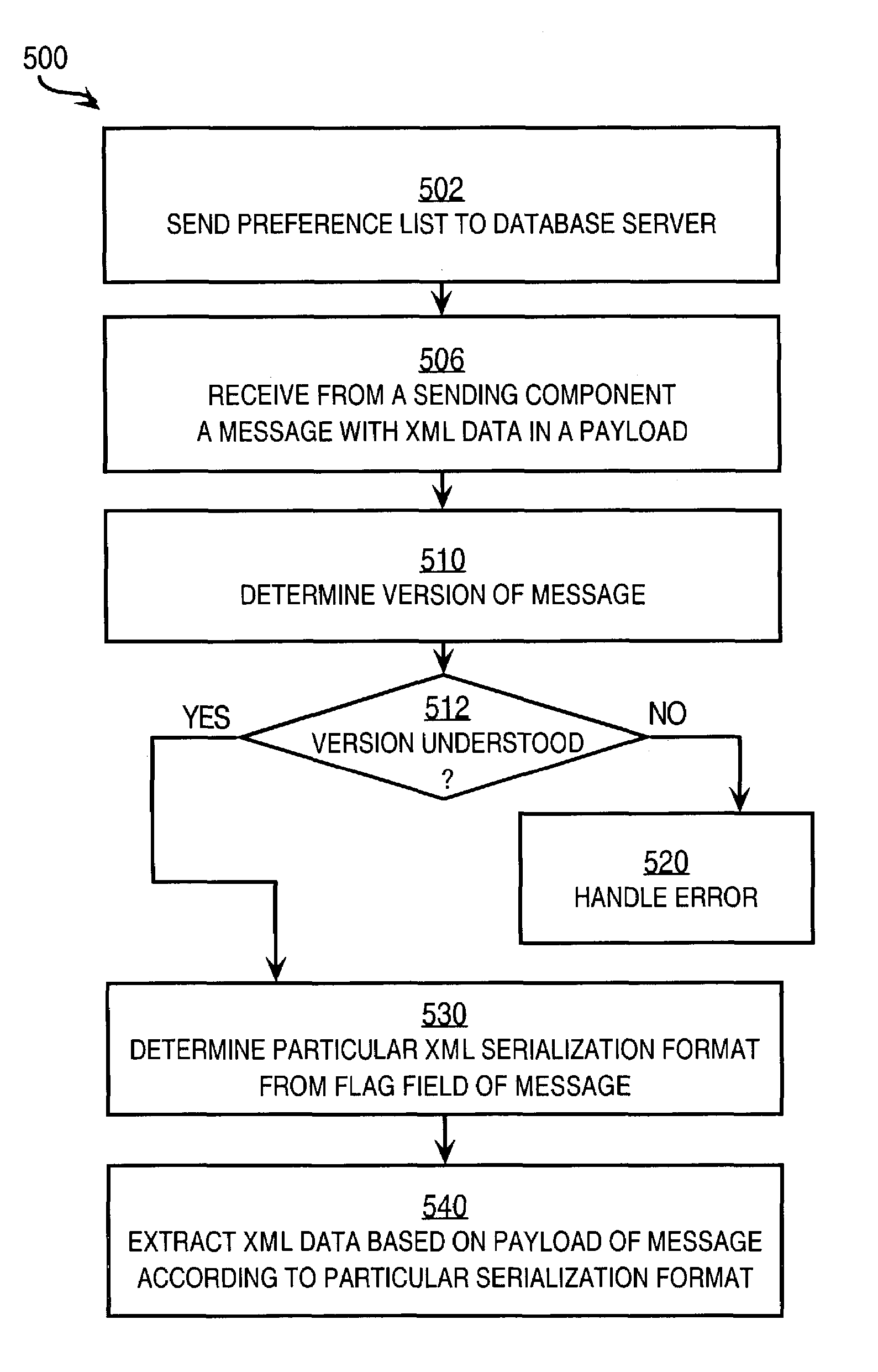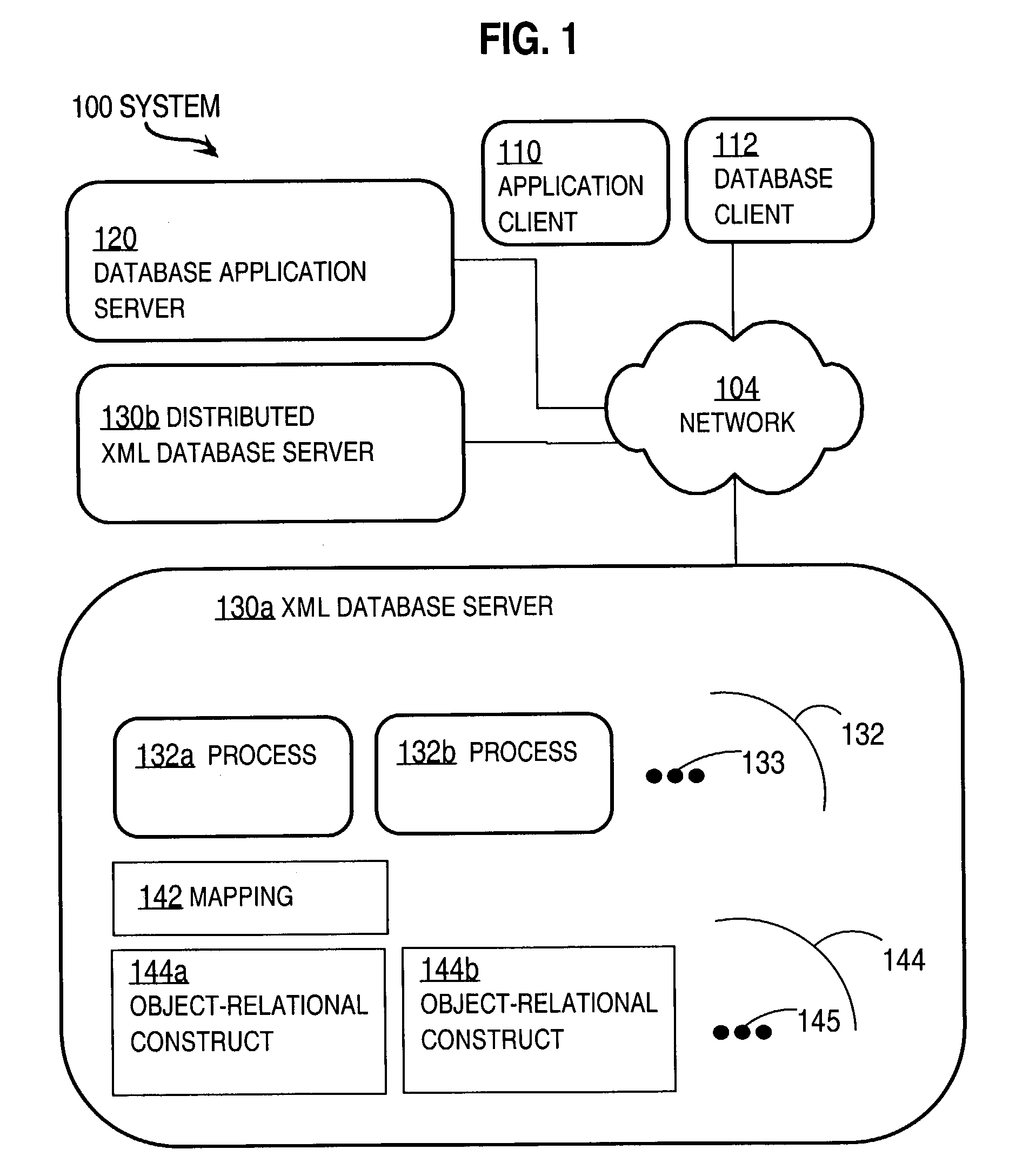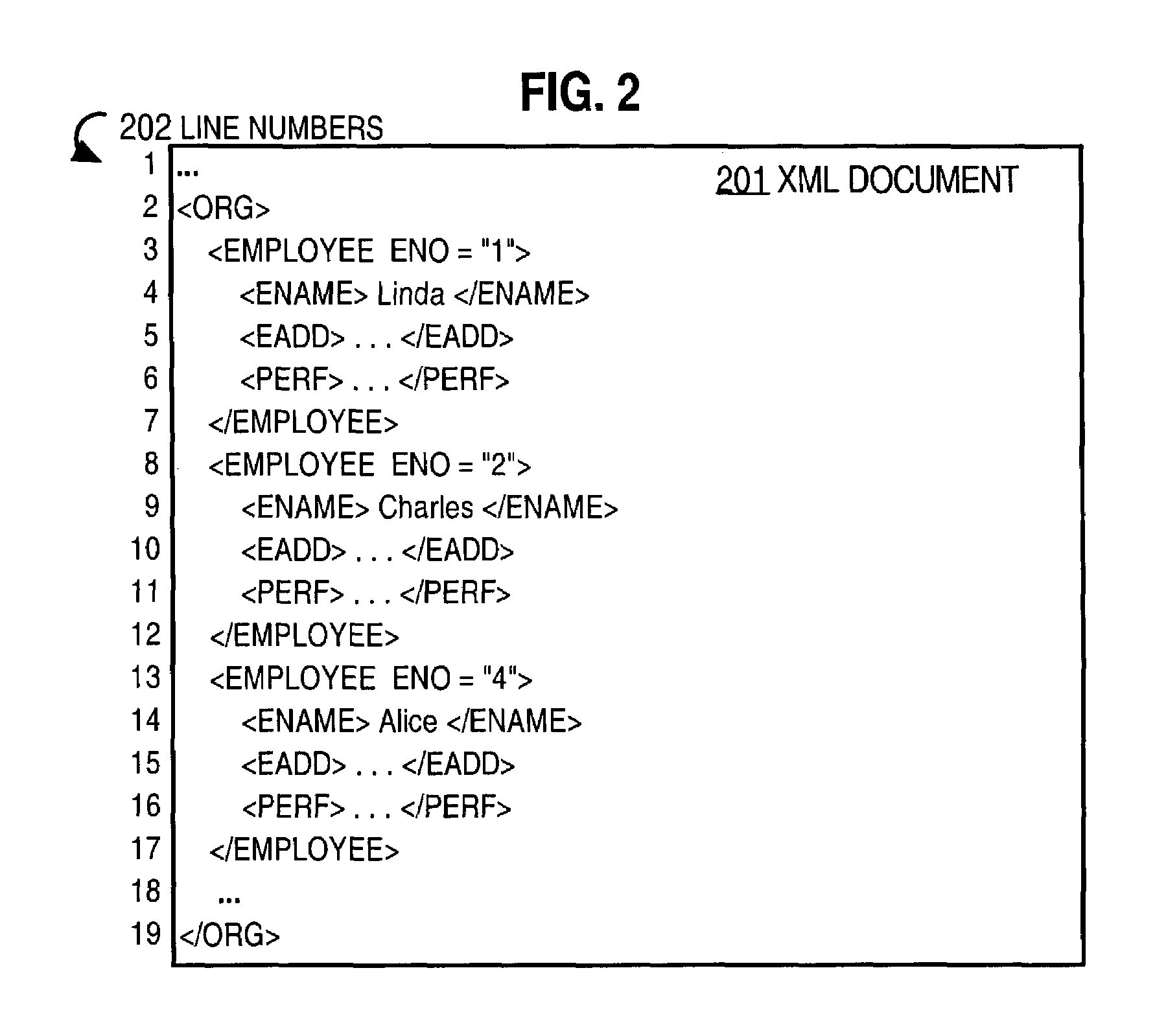Techniques for transferring a serialized image of XML data
a technology of serialized images and data, applied in the field of techniques for using extensible markup language (xml) data, can solve the problems of consuming considerable computational resources at the sending component, xml document can consume considerable bandwidth on the communication channel to transmit verbose documents, and xml standard is quite verbos
- Summary
- Abstract
- Description
- Claims
- Application Information
AI Technical Summary
Problems solved by technology
Method used
Image
Examples
Embodiment Construction
[0027]Techniques are described for transferring a serialized image of data for an XML construct. In the following description, for the purposes of explanation, numerous specific details are set forth in order to provide a thorough understanding of the present invention. It will be apparent, however, that the present invention may be practiced without these specific details. In other instances, well-known structures and devices are shown in block diagram form in order to avoid unnecessarily obscuring the present invention.
General Overview
[0028]According to one aspect of the invention, techniques for transferring a serialized image of data for an XML construct includes selecting a format from multiple different XML serialization formats. The XML serialization formats represent, in a database system, data for XML constructs as a series of data units, such as a series of bytes representing characters or bits, bytes or octets representing binary values. A message is generated that includ...
PUM
 Login to View More
Login to View More Abstract
Description
Claims
Application Information
 Login to View More
Login to View More - R&D
- Intellectual Property
- Life Sciences
- Materials
- Tech Scout
- Unparalleled Data Quality
- Higher Quality Content
- 60% Fewer Hallucinations
Browse by: Latest US Patents, China's latest patents, Technical Efficacy Thesaurus, Application Domain, Technology Topic, Popular Technical Reports.
© 2025 PatSnap. All rights reserved.Legal|Privacy policy|Modern Slavery Act Transparency Statement|Sitemap|About US| Contact US: help@patsnap.com



